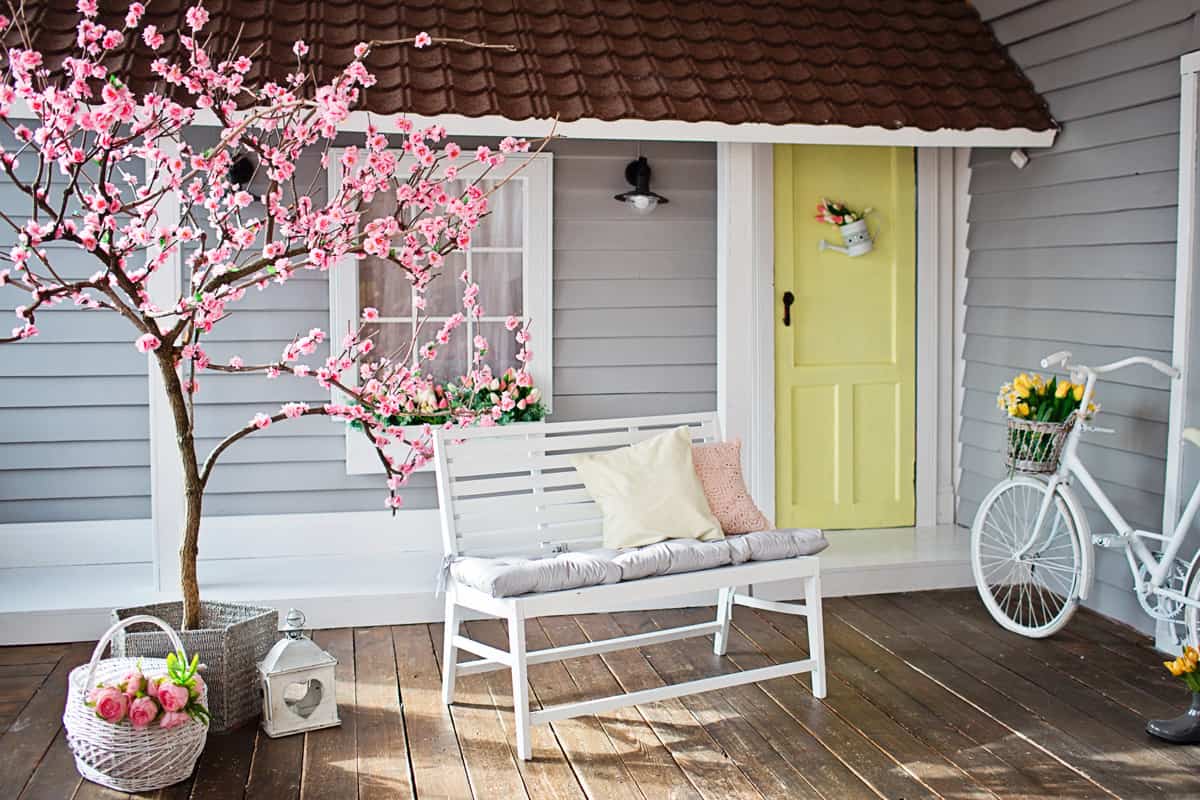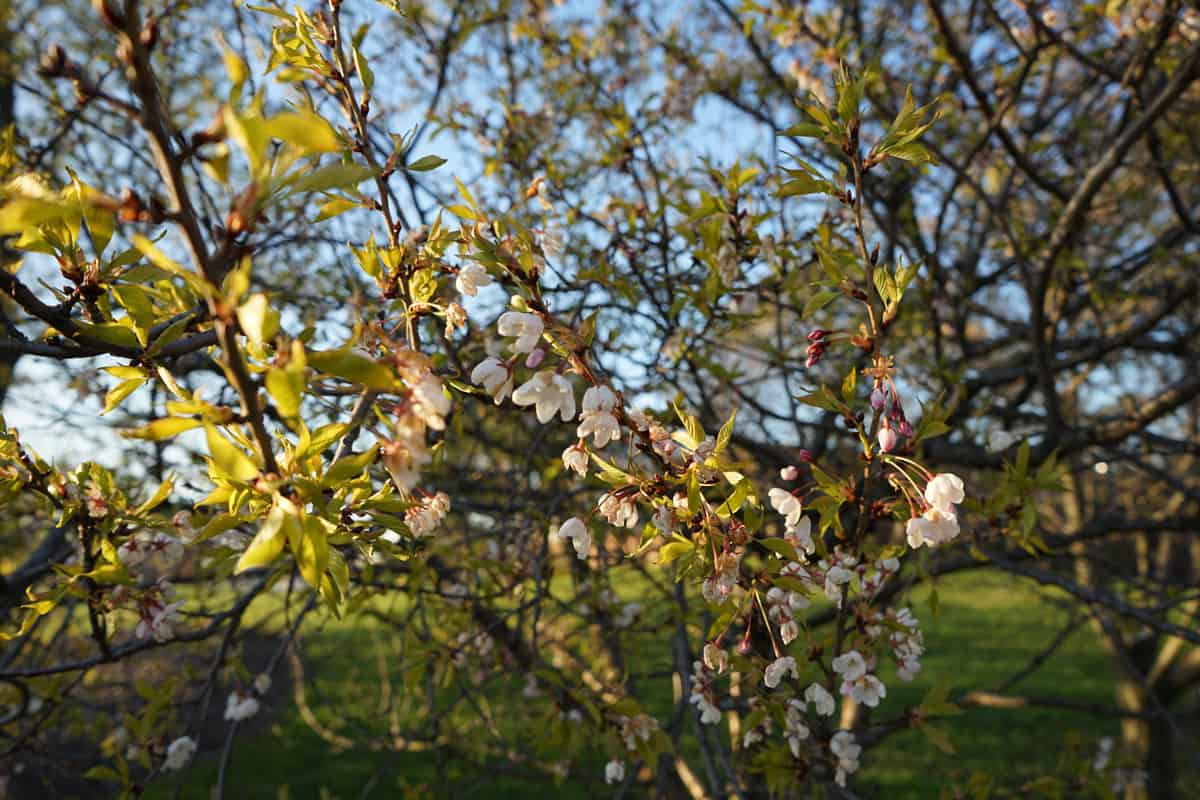Cherry trees are something that can add a lot to your garden or yard. However, the trees can deteriorate due to improper care. You may be wondering what to do if your cherry blossom trees are dying. We've scoured the net and have found the best answers for you.
If you own a cherry blossom tree, you need to know how to rescue it and bring it back to life when it is infected. Here are the things you can do for your dying cherry blossom tree:
1. Remove dead branches
2. Inspect for a sap
3. Check for wilting stems
4. Apply fungicides
5. Proper Sanitation
Who wouldn't want their garden covered with an abundance of light pink flowers? We will discuss the common reasons why a cherry blossom tree is dying, how to know when your cherry blossom tree is dying, and how you can save your dying cherry blossom tree. Continue reading to find out the answers to these questions.

How Do You Save A Dying Cherry Blossom Tree?

The cherry blossom has long been used as a metaphor for the transient nature of beauty and life. These trees are the first to produce an abundance of pink or white flowers in the early spring.
Although growing cherry trees are fascinating and satisfying, it is unfortunate that they are prone to several plant diseases. If a tree segment has dried up and died, there is no way to bring that part of the tree back to life. However, what is left can be brought back to life.
You naturally want to know what you can do to assist your cherry blossom tree in any way that you can. So here is what you can do for your dying cherry blossom tree:
1. Remove Dead Branches
You should identify the problems of a dying cherry blossom tree before it can be revived. It is advisable to cut off the dead branches and focus on revitalizing the remaining parts of the tree.
If you are unsure whether they are dead, wait until the following spring before pruning any branches that don't have new growth. Also, to stop the spread of other cherry blossom tree diseases like black knot fungus, it is necessary to remove the afflicted branches as soon as possible.
2. Inspect for a Sap

Look closely at the tree's trunk to see if the sap is leaking from it. If this is the case, the problem is likely a canker, and there is no recognized treatment for cherry tree canker sores. Once your cherry blossom tree is infected, there's nothing you can do about it.
The easiest way to treat some other cherry blossom tree diseases, such as black knot fungus, is to cut off the infected branches as soon as possible to stop the infection from spreading to other parts of the tree.
3. Check for Wilting Stems

Carefully inspect the wilting stems to check for any holes where the die-back begins. If so, remove the branches and discard them.
Next year, once the plant begins to leaf out, keep an eye out for any new wilting symptoms. Take a branch to your neighborhood cooperative extension or garden center at the first indication to see if they can spot the issue.
4. Apply Fungicides
Applying copper fungicides to your cherry blossom tree can help prevent brown rot illnesses, especially if the tree has already experienced brown rot. You can also spray the tree with fungicides.
Another method of preventing brown rot on cherry trees is properly watering them from below rather than above, removing congested canopies, and planting resistant kinds.
Click here to see this fungicide on Amazon.
5. Proper Sanitation
Always follow good sanitation procedures, such as clearing the area beneath the cherry blossom tree of garbage to avoid cherry leaf spots.
You can avoid cherry blossom tree canker sores by taking appropriate care of the tree and practicing good hygiene. It is also suggested that you wrap the trunk of cherry blossom trees with tree wrap to protect them from frost damage. By putting an appropriate amount of mulch around the cherry blossom tree, you may also give it the moisture it needs.
Common Reasons For A Dying Cherry Blossom Tree
In this region, cherry blossom trees are vulnerable to various issues. They often deteriorate due to inadequate watering, nutrient deficiency, or diseases.
Overwatering can cause a cherry blossom tree's roots to get overly saturated, resulting in illnesses like root rot. Your cherry tree's leaves will begin to turn yellow and will eventually drop off.
Even if the soil has enough nutrients, your cherry tree won't be able to adequately absorb the nutrients if the pH of the soil is outside of this range. Remember that cherry blossom trees also require a pH in their soil of 6.0 to 6.5, which indicates slightly acidic to neutral.
A disease might be able to destroy one tree. Even when diseases are less frequent, they can happen, mainly if you solely grow cherry trees.
The typical problems that cause cherry blossom trees to die are Black Knot, Brown Rot, Cherry Leaf Spots, Powdery Mildew, and Silver Leaf.
Characteristics Of A Dying Cherry Blossom Tree
The clearest evidence that your cherry blossom tree is dying is if it breaks easily under pressure. Search for dry, brittle branches that feel mushy and crumbly to the touch.
Examine the tree for signs of illness, such as big areas of missing bark or fissures in the bark. Cherry blossom trees have a green layer beneath their bark known as the cambium.
If it has become brown and dry, the tree has regrettably died. Also, if your cherry blossom tree fails to produce any flowers, it may be dead.
Allow your tree to cycle through one more growing season if you are still unsure whether it has died.
When IS The Best Time To Prune A Cherry Blossom Tree?
The best time to prune many plants is in the late fall and winter, but because the cherry blossom tree is more prone to diseases like silver-lead canker, most of the pruning should be done in the middle of summer, around May to August.
Although not all trees are created equal, some can be pruned safely during dormant periods.
Do Cherry Blossom Trees Need Lots Of Water?

Cherry trees don't need a lot of water every day, but you should change your watering plan if you find that your soil or environment is dry to prevent drought stress on your cherry trees. Water your cherry tree just enough to moisten, not drown, the root ball.
To monitor how much moisture your trees are regularly receiving, it may be a good idea to monitor the rainfall using weather reports or a rain gauge. Your trees can demand a little extra water when there is a drought.
How Long Can A Cherry Blossom Tree Live?
One must see a cherry tree in full blossom. However, they are vulnerable to issues like insect pests, diseases, and extreme weather. Cherry trees pass away naturally between 30 and 40 years.
In Closing

Like all living things, cherry trees require a particular environment to survive. The trees take up water and nutrients through their roots. Healthy soil and healthy roots are necessary for healthy trees.
The proper insect and fungal populations and the ability to hold onto moisture are requirements for the soil around the roots.
To summarize everything, the first step is to get rid of all the dead branches in your cherry blossom tree. Then you must inspect if the sap is present. Also, check for any wilting stems.
You should spray the tree with a fungicide that is suggested for controlling that fungus in the early spring. Lastly, clear away all ground litter from the tree, which might still hold the blight spores. You can assist avoid the reinfection of your plants.
Get an expert's take on the situation by calling them if you're still unsure about your cherry tree's problem. There's a good possibility they've seen it before and can send you in the right direction. Keep following the steps you think will work best to solve the problem.
We hope our advice was helpful to you. Before you go, check out these other posts:
Why Is My Dragon Tree Dying? [With Tips On What To Do About It]

